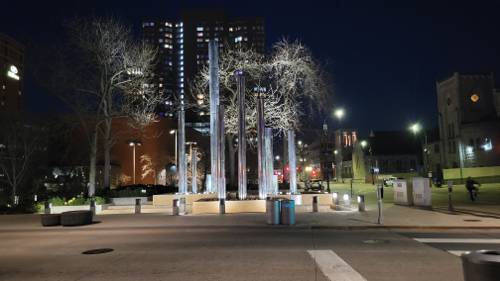
FAQ About The Role of Public Art in Community Engagement

What is public art and how is it defined?
Public art refers to artworks that are designed to be staged in public spaces, typically outside of traditional galleries and museums. It encompasses a wide range of art forms including sculptures, murals, installations, performances, and digital media. The primary characteristic of public art is its accessibility to all members of a community or the general public, often without an admission fee or barrier, encouraging more inclusive engagement with the arts.

How does public art contribute to community engagement?
Public art contributes to community engagement by creating a focal point for dialogue, reflection, and interaction among community members. It can serve as a meeting point for events, provoke thought and conversation about important issues, and foster a sense of pride and ownership over shared spaces. This engagement can lead to greater community cohesion and participation in civic life.

What role does public art play in urban spaces?
In urban spaces, public art can transform the visual character and identity of an area, making it more vibrant and stimulating. It can revitalize neglected parts of a city, attract visitors and tourists, and enhance economic development. Additionally, it serves an educational purpose, often reflecting the history, culture, and diversity of the community it inhabits.

Can public art help preserve cultural identity?
Yes, public art often plays a crucial role in preserving and celebrating cultural identity. It can highlight the traditions, stories, and values of different cultures through visual representations and shared narratives. By doing so, it helps maintain cultural heritage and fosters understanding and appreciation among diverse groups within a community.

What types of public art are most effective in engaging communities?
Effective public art forms for community engagement include murals, interactive installations, and community-created art projects. Murals can reflect local culture and history, interactive installations invite direct participation, and community-created projects directly involve residents in the creative process, strengthening their connection to the artwork and each other.

How do public art projects get funded?
Public art projects are often funded through a combination of local government grants, private donations, corporate sponsorships, and non-profit organizations. Some cities have "percent for art" programs, requiring a percentage of the budget of public construction projects to be allocated to public art. Crowdfunding and community fundraising events are also viable options for sourcing funds.

What are some challenges faced by public art initiatives?
Public art initiatives can face several challenges, including funding constraints, public disinterest or opposition, vandalism, and maintenance issues. Additionally, there can be legal and logistical challenges concerning site selection, permissions, and permanence of the art pieces. Successful projects often require careful planning and community involvement to overcome these obstacles.

How do communities usually respond to public art installations?
Community responses to public art installations can vary widely. Positive responses often include increased local pride, tourism, and community interaction. However, some installations may provoke controversy or debate, especially if they involve provocative themes or occupy significant public spaces. This discourse can itself be valuable, encouraging deeper reflection and dialogue.

What are key considerations for artists when creating public art?
Artists creating public art must consider the environment and community where the artwork will be placed, ensuring the piece resonates with local culture and values. Accessibility, durability, and interactiveness are also important to engage a wide audience effectively. Additionally, artists should think about how their work will be interpreted and maintained over time, and the potential social and cultural impacts it may have on the community.

Can digital mediums be used effectively as public art?
Digital mediums can be highly effective in public art, offering innovative ways to engage with communities. Digital installations might include projections, virtual reality experiences, or interactive screens, allowing viewers to interact in real-time or participate remotely. These technologies can reach broader audiences and offer dynamic, changing artworks that continually capture public interest.

Why is public participation important in public art projects?
Public participation is vital in public art projects because it ensures the artwork is meaningful and relevant to the community. When community members are involved in the creation or decision-making processes, it fosters a sense of ownership and pride. This involvement can enhance the artwork's impact, making it a more integral part of the community and encouraging ongoing engagement with public spaces.

How can public art influence the perception of a city or town?
Public art can profoundly influence the perception of a city or town by enhancing its aesthetic appeal and defining its cultural identity. Iconic public artworks can become landmarks, drawing tourists and potentially boosting the local economy. They also contribute to a unique sense of place, often transforming cities into vibrant cultural hubs that reflect creativity and innovation.

What is the difference between public art and graffiti?
Public art and graffiti differ primarily in terms of permission and intent. Public art is typically commissioned, planned, and supported by governing bodies or community groups, with the intent to enrich public spaces. Graffiti, while often similarly creative and communicative, is usually unsanctioned and can be considered vandalism if it defaces property without consent. However, some cities embrace graffiti as a form of artistic expression within legal and designated areas.

How is public art maintained?
Maintaining public art involves regular cleaning, repairs, and sometimes restoration work to address wear and damage from weather or vandalism. Maintenance responsibilities often fall to the commissioning body, such as local governments or arts organizations. Contracts with artists may include maintenance provisions, and sometimes communities establish "friends of" groups to help support public art upkeep.

What impact does public art have on local economies?
Public art can positively impact local economies by attracting tourists, creating jobs related to art production and installation, and increasing foot traffic in surrounding areas. It can elevate urban spaces, making them attractive destinations, thus benefiting local businesses and encouraging investment. Additionally, public art can enhance property values and contribute to the economic vitality of a community.

In what ways can public art be controversial?
Public art can be controversial when it challenges social norms, addresses divisive topics, or is perceived as aesthetically displeasing by certain groups. Additionally, debates may arise over the cost of public art projects, particularly if taxpayer money is involved. These controversies can spark critical conversations and engagement, highlighting the power of art to provoke thought and dialogue.

What are examples of successful public art projects?
Examples of successful public art projects include Christo and Jeanne-Claude's "The Gates" in Central Park, New York City; the "Cloud Gate" sculpture, also known as "The Bean," in Chicago's Millennium Park; and the East Side Gallery, a preserved section of the Berlin Wall in Germany covered in murals. These projects have drawn wide public interest, fostering engagement and becoming significant cultural icons.

How can technology enhance public art projects?
Technology enhances public art projects by enabling interactive and immersive experiences. Augmented reality apps can provide additional layers of information and interaction, while digital mapping techniques create dynamic light projections. Social media platforms can also amplify the reach of public art by encouraging user-generated content and engagement beyond the physical site, effectively increasing its audience and impact.

What is the purpose of temporary public art installations?
Temporary public art installations serve to engage audiences with fresh, timely, and often site-specific works that provoke thought and conversation. They offer artists the freedom to experiment with new materials or concepts and invite communities to interact with art for a limited period, creating unique, memorable experiences. This temporality can make the art more dynamic, responsive to current events or trends, and accessible to a broader audience.

How do public art projects adapt to different cultural contexts?
Public art projects adapt to different cultural contexts by incorporating local traditions, materials, and histories into the artwork. Artists often work closely with community members and cultural experts to ensure the work resonates and is respectful of local sensibilities. Flexibility in design and approach allows artists to create pieces that speak to the specific cultural, social, and environmental context they inhabit.
